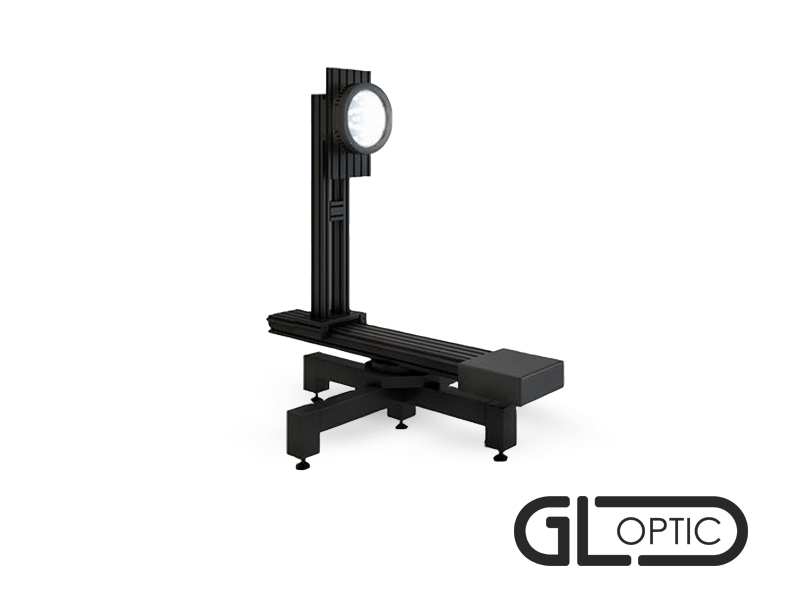
Introducing the latest innovation from GL Optic.
ENTER THE WORLD OF THE GONIOSPECTROMETER
GL Optic’s latest innovative product combines the functionality of a goniophotometer with the features of a spectroradiometer to measure brightness and to check angle dependence luminous intensity.
MEETING THE DEMANDS OF THE MARKET
Traditional goniometers use a photometer as a measuring probe. However, contemporary SSL (Solid State Lighting) such as LED and/or OLED lamps and luminaires require the use of spectroradiometers. This is because LEDs are narrow-banded sources and simple systems based on photodiodes can cause additional errors (due to the LED spectral curve which is limited to a small spectral range).
Angular color measurements
This setup conforms the Goniospectrometric measurement on four C planes at γ angles in 10° steps according to the IES LM-79 standard
Spectrometric and colorimetric measurements
This setup conforms the Goniospectrometric measurement on four C planes at γ angles in 10° steps according to the IES LM-79 standard
- Spectrometric measurement software
- GL SPECTIS series spectrometer
WHAT DOES A GONIOSPECTROMETER MEASURE?
Use a goniospectrometer to check the angle dependence luminous intensity along with colorimetric values like color, color temperature and CRI.
A STANDARD GONIOMETER SYSTEM INCLUDES:
• C type goniometer in C-γ coordinate
• Class A laboratory photometer
• Current or power sources and power meter
• Optical axis in horizontal direction
• Angular luminous intensity measurements
• Luminous flux measurements
• EULUMDAT file generation
GONIOMETRIC MEASUREMENT PRINCIPLE
The luminaire is rotated around the horizontal and vertical axis and at each position the photometric signal is measured at a fixed photometer location in the far field of radiation. The C-plane in which the luminous intensity is measured is controlled by the horizontal axis. In each C-plane, the angular luminous intensity distribution of the luminaire under test (LUT) is measured as a function of γ angle by turning the LUT with the vertical axis.
HOW DO YOU CHOOSE THE OPTIMAL GONIOMETER?
The dimensions and luminous area shape of a luminaire and required accuracy determine the size of the goniometer. The instrument needs to be adjustable to position the photometric center of luminaires with varying thicknesses (distance from its back surface to the photometric center) to the turning axes. For measurement of luminaires with an upward radiation, the maximum γ angle of the goniometer and luminaire mounting should be such that the dead angle is minimized and the total radiation angular range is covered.
| Product | GLG-1-20 | GLG-6-70 | GLG-20-150 |
| Application area | Small LED sources retrofit lamps (E14;E27;etc) | up to medium sized SSL sources | up to large luminaires |
| Height – Width – Length – Weight | 300 mm; 300 mm (stand); 300 mm (stand); appr.4 kg | 700 mm; 700 mm (stand); 700 mm (stand); appr. 25 kg | 1240 mm; 1500 mm (stand); 1500 mm (stand); appr. 70kg |
| LUT Photometric center positioning | adjustable within 150 mm (vertical axis) | adjustable within 300 mm (vertical axis) | adjustable within 575 mm (vertical axis) |
| Max. dimension of the LUT* | 0.2 m | 0.7 m | 1.5 m |
| Max. mass of the LUT# (in installed status) | 1.5 kg | 6 kg | 20 kg |
| Minimum space for installation (w x h x l) | table installation 0.4 m x 0.4 m x 1.2 m | goniometer onto table or floor photometer in tripod 0.7 m x 0.7 m x 5 m | floor installation 2.5 m x 2.5 m x 9 m |
